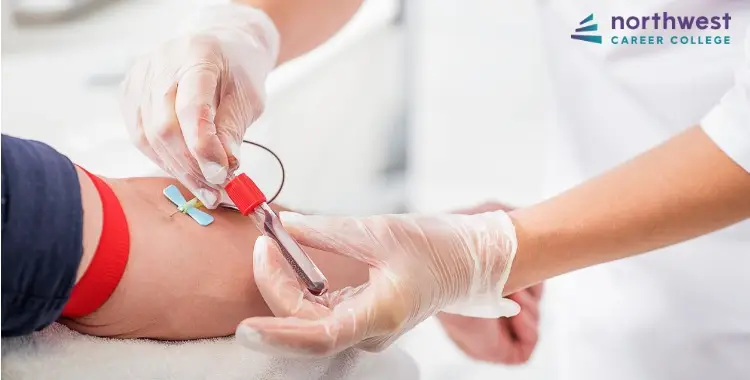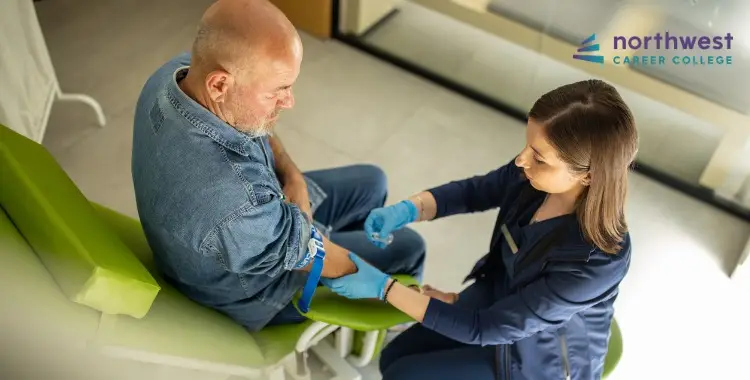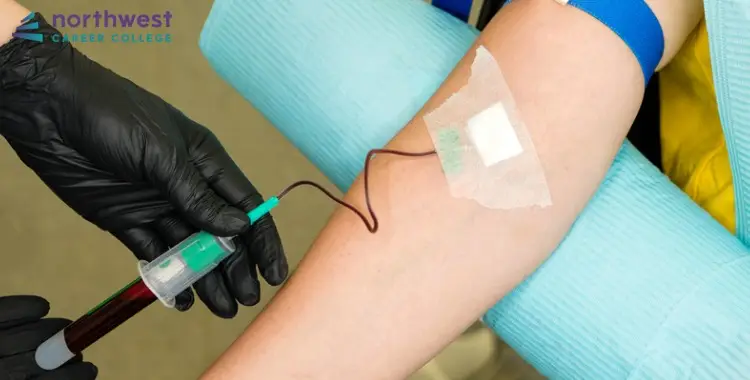How to Manage Anxiety and Fears in Phlebotomy Patients
- Phlebotomy Technician
- March 12, 2024
- 3.4k views
- 4 min read

Having your blood drawn can be one of the more stressful parts of routine medical care for patients. Although it is usually a quick procedure, and the after-effects are minimal, it often induces anxiety and fear in patients.
This article speaks to the different reasons patients experience anxiety and fear during phlebotomy procedures and how phlebotomists can manage them.
Table of Contents
Understanding Patient Apprehension
There are several common reasons why patients may be anxious during phlebotomy procedures. The most common are a fear of needles, uncertainty about the procedure that is being done, or a previous negative experience with a phlebotomy procedure.
If you perceive that your patient has anxiety, it is vital to address the anxiety directly. By addressing rather than ignoring the issue, you can work with that individual to identify their concerns and tailor your approach accordingly.
Focus on communicating empathetically, and ask the patient if they are willing to share about their anxiety. Evaluate the patient’s response as they respond to your question. If they tell you what they are afraid of, it will allow you to assuage those concerns. You can learn something valuable based on their reply, even if they do not share their anxieties.
You may not be able to overcome a longstanding fear of needles in a few short minutes, but you should be able to speak to what you are planning to do, bringing clarity to the situation, and identifying what practices you will implement to prevent a repeat of their previous negative experience.
Focus on Communication and Trust
Focus on communicating clearly and consistently throughout. Make sure to actively listen whenever the patient is speaking to you. If they share anything that is causing them concern, address it promptly.
Ask the patient if they have any questions regarding the procedure. If they do, make sure to answer those before you proceed. Also, double-check if they would like you to explain the procedure, as the fear of the unknown can be a significant contributor to anxiety.
Although some patients want to avoid hearing or seeing anything related to the procedure, many will appreciate you explaining what will happen before you start and narrating each step. In either case, offering to do so fosters open dialogue and builds rapport with your patient.
Utilize Distraction Techniques and Comfort Measures
You can distract the patient in several different ways, depending on their level of anxiety and openness to feedback.
The most basic distraction technique involves engaging in conversation during the procedure. You can talk to the patient about small things like what they did last weekend or what they have planned for the rest of their day to take their mind off the upcoming procedure.
More “advanced“ distraction techniques include deep breathing exercises and visualization. These require more focus from the patient but can be more effective when helping patients with higher levels of anxiety. Deep breaths calm the patient’s heart rate, and visualization allows them to focus their attention outside the procedure room. Both techniques provide relief of anxiety when appropriately applied.
You can also use environmental adjustments to make the space more comfortable. This includes adjusting the lighting (although never to a level of dimness that impacts your ability to perform the procedure safely) and adjusting the seating arrangements so they can have a visual distraction by looking out the window or at something interesting on the wall.
Finally, though not used commonly, you can use other comfort measures like numbing creams to minimize discomfort and enhance the overall patient experience. Such practices are usually limited due to concerns about blood sample contamination, but when applied correctly, they can be used for particularly sensitive patients.
Conclusion.
These are just a few simple techniques that you can use to enhance patient comfort if they display signs of anxiety or fear during a phlebotomy procedure. Other techniques taught in phlebotomy training programs will be covered in a future article.
However, the most critical takeaway is to maintain a patient-centered approach. Focus on effective communication and listening to your patient at all times to provide the most comfortable and positive phlebotomy experience for your patient. if you do, you might just be the first positive blood draw experience for them, creating a whole new standard by which they evaluate future phlebotomy appointments





